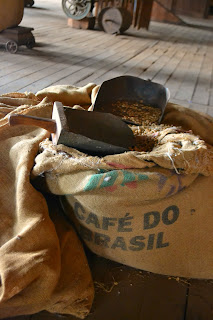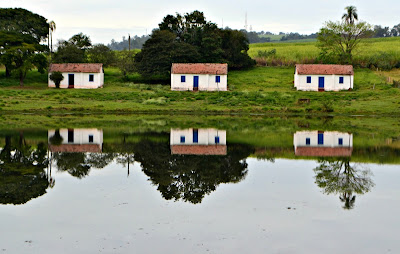 |
| The picturesque town of Paraty. |
 |
| While neighboring Olinda gets a lot more tourists, the old town of Recife, which dates to the same time period, is worth a visit as well. |
2. Rio - This city was easily one of my favorites in all of Brazil. I can't explain it other that to say I love the carioca spirit! If I had lived closer I would have been camped out at Posto 9 on Ipanema ever chance I got. Nevertheless, I did manage to visit four times in three years, a couple of those for a week! My advice for travelers: come once to do the touristy stuff - Pão de Açúcar, Christ the Redeemer (or skip this...ugh!), the Centro/Lapa district and Selaron Steps, and the Botanical Gardens - then come back again and beach until you can no longer beach.
 |
| Rio at Carnaval is just as spectacular as you would hope. The energy of dancing until sunrise in the Sambadrome is contagious! |
 |
| One of my favorite places in Rio, other than the beaches, and a must-see for any tourist - the Botanical Gardens. |
 |
| Ipanema beach at sunset...sigh |
 |
| Paçoquita is a popular brand of paçoca. (Photo source) |
I love these plain or as a topping on açai. Speaking of...
4. Açaí - This "super food" is pretty pricey outside of Brazil, but in the country it is easy to find and worth the cost. Made from a berry, and served frozen with guaraná mixed in, it is delicious on the beach with bananas, granola, and paçoca...or basically whatever you want: strawberries, condensed milk, chocolate syrup, honey, etc. They may eat it at health-food shops in L.A., but it Brazil it is treated like ice cream. I have no problem with that.
 |
| This delicious monstrosity from a trip to Guarujá is topped with papaya, granola, condensed milk, and banana. |
5. Inhotim - This massive outdoor sculpture garden slash installation museum located in the middle of nowhere in Minas Gerais about an hour from Belo Horizante is a must see. If you "don't get" contemporary or modern art, Inhotim just might change your mind, but be prepared for sore feet and a sensory overload by the end of the day because you are part of the art here. Not to mention all of this takes place in what amounts to a gorgeous botanical garden. I don't know why this place isn't a bigger deal!
 |
| "Invenção da cor" by Brazilian artist Hélio Oiticica. |
 |
| "Narcissus Garden" by Japanese artist Yayoi Kusama. |
6. Oscar Niemeyer - The architect of the UN Building in New York, Niemeyer's designs are all over Brazil, especially dominating Brasília, which he helped plan from the ground up. A proud communist who did not believe in private ownership of the earth, one common thread of his work is that all ground floors are open to the public, many literally so. Niemeyer also does things with concrete that seem to defy gravity.
 |
| Brasilia's Museu Nacional H. Guimarães with the National Cathedral in the background, all designed by Niemeyer. |
 |
| Niemeyer has several works in São Paulo's Memorial da América Latina, including the Salão de Atos building. |
7. A praia - Brazil knows how to do beaches. Whether in Rio, Recife, Ubatuba, or Guarujá, you find a spot, rent a few chairs, an umbrella, spread out your canga, and wait for the cerveja and açai vendors to stroll by. It's that simple. Don't forget your sunga!
 |
| Praia Trindade between Ubatuba and Paraty. |
"Different and peculiar."
I think I'll just let this blog end with that...







































